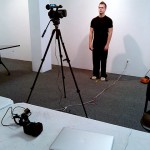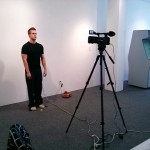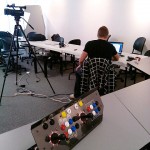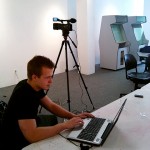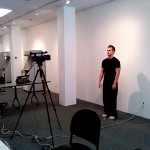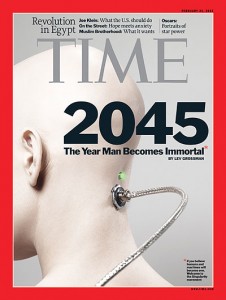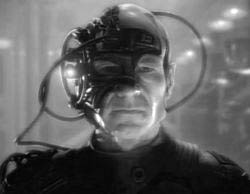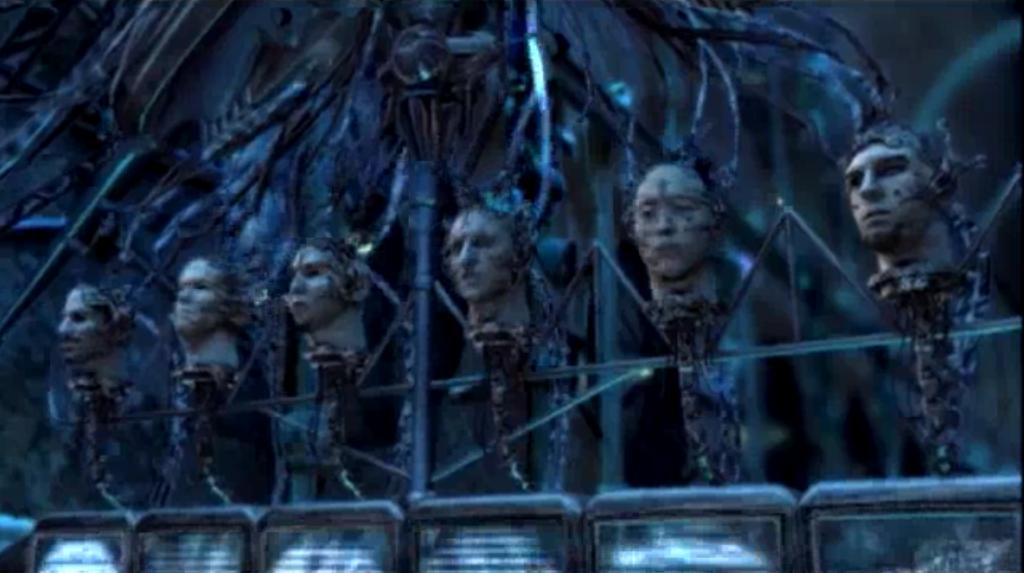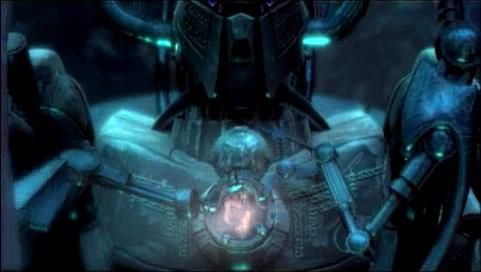With the completion of our exhibition, our cabinet project in its finalized form was displayed for our fellow classmates and others to engage with. “I am Nobody” was selected as the final name for our cabinet and it appeared quite fitting a name for a variety of reasons. Presenting the illusion of a classic arcade style video game machine through the use of a created slash screen and an 8-bit original score (a great thanks to James and Adam for their work), many exhibit goers were immediately drawn to our cabinet with the expectation that they would get to play away at our class inspired video game. This was the intentional purpose of this splash screen. Immediately upon engaging with the controls, the splash screen quickly changes to reveal a low-fi, grainy looking black and white screen with a head and shoulders on screen. With no instruction or any indication as to what the users were suppose to do, they immediately began to push away at buttons and joysticks in an attempt to discover what the buttons did. Most users quickly discovered the joysticks had the ability to move the direction of the head (and a great many took the opportunity to experiment with just how fast those multiple directions could be achieved in sequence). The buttons were much more challenging for users to discern. As one button was keyed, users were unexpectedly greeted with a fragment of a sentence. Still unsure what they must do, they continued to work their way through the buttons. Each time, most users faced a slue of “No”, “Really?!”, “Warmer”, “Colder”, or even an inquisitive eyebrow raise. Inducing immediate frustration, users either continued to push buttons until they found yet another fragment (or with some sentences, the second part of it), or they simply left the machine expressing clear frustration. Users who toughed out the seemingly repetitive and annoying barrage of negative responses were ultimately rewarded with the complete sentence. All of the sentences on our cabinet have something to do with body criticism and stem from a wide range of sources. Here is a complete list:
1.“That’s what death must be like; one sees oneself simultaneously, as oneself and as the other” –Marshall McLuhan, “The Global Village, xii”
2. Few of us have lost our minds, but most of us have long ago lost our bodies. ~Ken Wilbur
3. “Who is it that can tell me who I am?” King Lear (1.4.230)
4. “Man differs more from man than man from beast.” John Wilmot A Satyre Against Mankind
5. “I do not believe that any man fears to be dead, but only the stroke of death” Francis Bacon
6 .“I am not merry; but I do beguile the thing I am, by seeming otherwise.”
Othello, 2. 1
7. Our own physical body possesses a wisdom which we who inhabit the body lack. We give it orders which make no sense. ~Henry Miller
8. To keep the body in good health is a duty… otherwise we shall not be able to keep our mind strong and clear. ~Buddha
9. Why should a man’s mind have been thrown into such close, sad, sensational, inexplicable relations with such a precarious object as his body? ~Thomas Hardy
10. How idiotic civilization is! Why be given a body if you have to keep it shut up in a case like a rare, rare fiddle? ~Katherine Mansfield, Bliss and Other Stories
11. Man is an intelligence in servitude to his organs. ~Aldous Huxley
12. Flesh goes on pleasuring us, and humiliating us, right to the end. ~Mignon McLaughlin, The Second Neurotic’s Notebook, 1966
13. “I do not fear computers. I fear the lack of them.” ~Isaac Asimov
14. “Life is pleasant. Death is peaceful. It’s the transition that’s troublesome.” ~Isaac Asimov
15. “It may be that our role on this planet is not to worship God – but to create him.” ~Arthur C. Clarke
16. “It is the fate of operating systems to become free.” ~Neal Stephenson
17. “Death gives meaning to our lives. It gives importance and value to time. Time would become meaningless if there were too much of it.” ~Ray Kurzweil
As we displayed our cabinet, many users had questions for us, including but not limited to: “So what’s the story behind this machine?”, “How does it work?”, “Hey, is that you in the cabinet?”, “Do warmer and colder actually mean I’m close to or far from the right button?”
Some of these questions we could answer immediately, while others we had to let users find out for themselves (because these are supposed to be objects to think with, so we had to get them thinking and let them do so for a little bit!) For the most part, the reception we received in regards to our cabinet was very positive. Unfortunately, for every positive piece of feedback also had negative reactions from users brought about by the utter frustration our cabinet had caused for them during their time with the machine. We did not take the negativity to heart per se, as it was one of the expected outcomes we had in mind when we designed this project. When peoples expectations are suddenly challenged, the reaction can be negative. In addition to this, because their was no “step-by-step” or “how-to-guide”, many users were at a loss for how the game worked and simply got frustrated when instant gratification was not given to them for their actions. This was not designed to be a game, however, when placed inside a MAME cabinet, people will naturally assume and expect a sort of game-like element. This is exactly what we had planned for.
We will be posting footage and images from the exhibit shortly and keep the blog updated with reflection or news about any future presentations that our cabinet will take part in.

